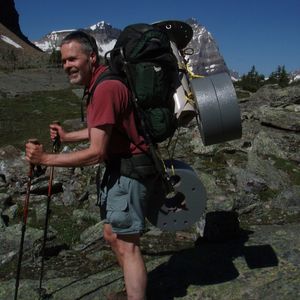
Craig Williamson is the OH Eminent Scholar of Ecosystem Ecology at Miami University in the Department of Biology.
The trophic paradigm, and particularly the holy grail of nutrients and chlorophyll have been central to understanding the structure and function of lake ecosystems for decades. Yet in recent years, studies of thousands of lakes reveal “stasis”, little or no change in overall nutrients and chlorophyll. In the meantime, many lakes are undergoing strong changes in water transparency that range over two-fold in both directions – increasing as well as decreasing water clarity. Drivers range from increases in dissolved organic matter that turn water browner, to a doubling of water transparency due to invasive mussel species. These changes in the underwater light environment involve not only visible light, but ultraviolet radiation (UV) as well: wavelength matters. UV plays a critical role in regulating everything from the vertical and horizontal distribution of zooplankton and fish, to the abundance of parasites, pathogens, and vectors of many aquatic organisms.
Sponsored by the Environmental Change Initiative.